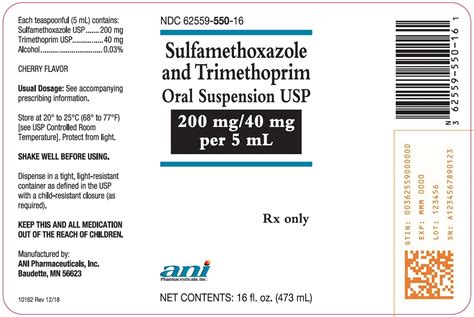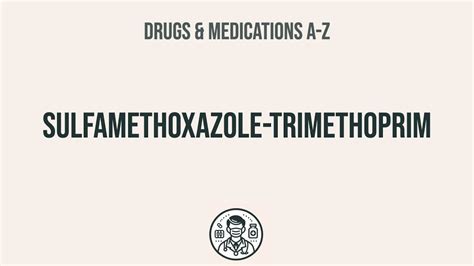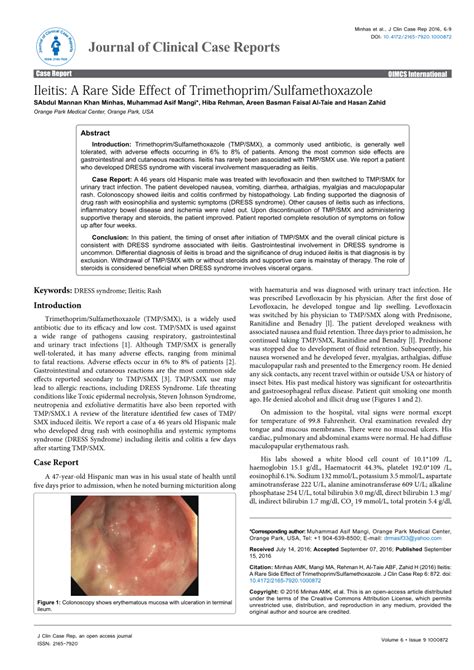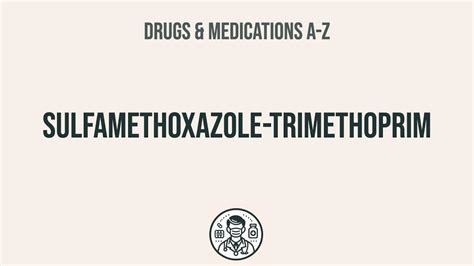Intro
Discover Sulfamethoxazole Trimethoprim side effects, interactions, and warnings. Learn about antibiotic resistance, allergic reactions, and gastrointestinal issues related to this combo antibiotic, including nausea, rash, and diarrhea, to ensure safe usage and minimize adverse reactions.
The use of antibiotics has become a common practice in the treatment of various bacterial infections. One such antibiotic is Sulfamethoxazole Trimethoprim, a combination of two antibiotics that work together to treat a wide range of bacterial infections. However, like all medications, Sulfamethoxazole Trimethoprim can cause side effects, some of which can be severe. It is essential to understand the potential side effects of this medication to ensure safe and effective treatment.
Sulfamethoxazole Trimethoprim is a widely prescribed antibiotic used to treat urinary tract infections, bronchitis, and other bacterial infections. The medication works by inhibiting the growth and multiplication of bacteria, ultimately leading to their death. While it is an effective treatment option, it can cause side effects, ranging from mild to severe. It is crucial to be aware of these potential side effects to seek medical attention if they occur.
The importance of understanding Sulfamethoxazole Trimethoprim side effects cannot be overstated. By being informed, patients can take necessary precautions to minimize the risk of adverse reactions and ensure a smooth treatment process. Additionally, healthcare providers can monitor patients for potential side effects and adjust treatment plans as needed. In this article, we will delve into the world of Sulfamethoxazole Trimethoprim side effects, exploring the common, less common, and rare side effects associated with this medication.
Sulfamethoxazole Trimethoprim Common Side Effects

Sulfamethoxazole Trimethoprim Less Common Side Effects

Sulfamethoxazole Trimethoprim Rare Side Effects

Factors that Increase the Risk of Sulfamethoxazole Trimethoprim Side Effects
Certain factors can increase the risk of experiencing side effects from Sulfamethoxazole Trimethoprim. These include: * Age: Older adults and children are more susceptible to side effects * Kidney or liver disease: Patients with pre-existing kidney or liver disease may be more prone to side effects * Allergies: Patients with a history of allergies, particularly to sulfonamides or trimethoprim, may be at increased risk * Pregnancy or breastfeeding: Sulfamethoxazole Trimethoprim should be used with caution in pregnant or breastfeeding women * Other medications: Interactions with other medications, such as warfarin or phenytoin, can increase the risk of side effectsMinimizing the Risk of Sulfamethoxazole Trimethoprim Side Effects

Monitoring for Sulfamethoxazole Trimethoprim Side Effects
Regular monitoring is essential to detect potential side effects early. Patients should: * Attend follow-up appointments with their healthcare provider * Report any new or worsening symptoms to their healthcare provider * Undergo regular blood tests to monitor liver and kidney function * Be aware of the signs and symptoms of severe side effects, such as allergic reactions or blood disordersSulfamethoxazole Trimethoprim Interactions

Managing Sulfamethoxazole Trimethoprim Side Effects
If patients experience side effects from Sulfamethoxazole Trimethoprim, they should: * Contact their healthcare provider for guidance * Stop taking the medication if advised to do so by their healthcare provider * Seek medical attention if symptoms are severe or worsening * Be aware of the signs and symptoms of severe side effects, such as allergic reactions or blood disordersConclusion and Future Directions

We encourage readers to share their experiences with Sulfamethoxazole Trimethoprim and its side effects. Please comment below with any questions or concerns you may have. Additionally, we invite you to share this article with others who may benefit from this information.
What are the most common side effects of Sulfamethoxazole Trimethoprim?
+The most common side effects of Sulfamethoxazole Trimethoprim include nausea and vomiting, diarrhea, abdominal pain, headache, dizziness, rash, and itching.
Can Sulfamethoxazole Trimethoprim cause severe side effects?
+Yes, Sulfamethoxazole Trimethoprim can cause severe side effects, including allergic reactions, blood disorders, liver damage, and kidney damage.
How can I minimize the risk of Sulfamethoxazole Trimethoprim side effects?
+To minimize the risk of side effects, patients should take the medication as directed, monitor their body temperature, stay hydrated, avoid taking other medications that may interact with Sulfamethoxazole Trimethoprim, and inform their healthcare provider about any pre-existing medical conditions or allergies.
